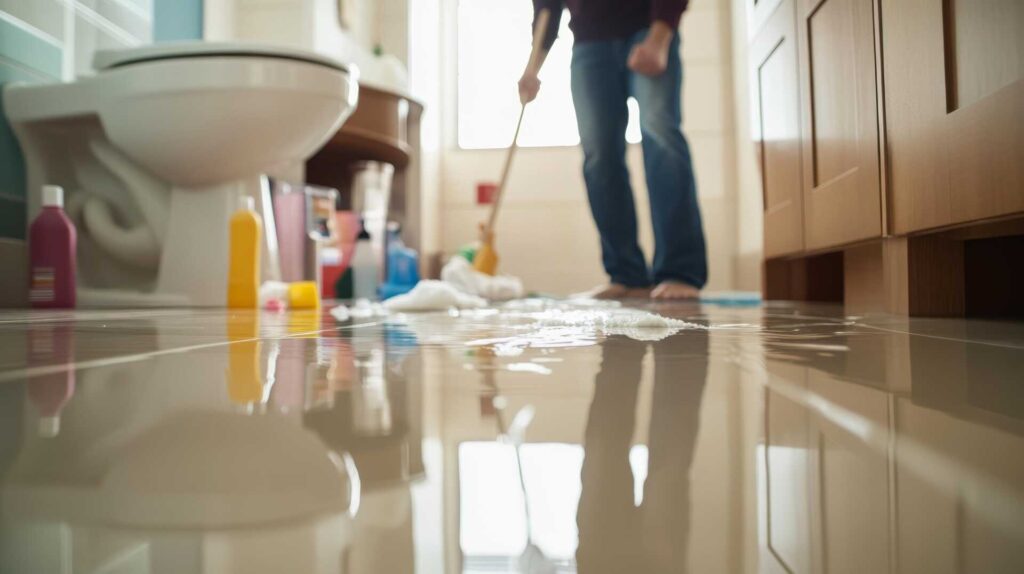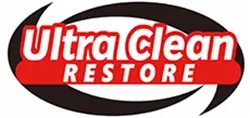
Contents
When you encounter a sewage backup, it’s essential to act swiftly and effectively. You can tackle the situation with a variety of affordable solutions that prioritize safety and efficiency. From utilizing high-capacity vacuums to implementing cost-effective repair materials, the right strategies can minimize damage and costs. Understanding these methods helps you in the short term and sets the stage for long-term prevention of future issues. What steps will you take first?
Key Takeaways
- Use absorbent materials like cat litter or towels to soak up excess sewage before cleaning the area thoroughly.
- Invest in a high-capacity wet/dry vacuum for efficient sewage removal and debris management.
- Source affordable repair materials such as PVC piping and waterproof sealants for durable fixes.
- Document damage with photos and review insurance policies to ensure coverage for sewage cleanup costs.
- Engage the community in maintenance efforts and organize clean-up events to promote collective responsibility for drainage issues.
Assessing the Damage and Safety Precautions
When you encounter a sewage backup, it’s crucial to assess the damage and implement safety precautions before proceeding. Start by identifying the affected areas and the extent of contamination. This damage assessment will guide your next steps and help you understand the potential health risks involved.
Before you begin any cleanup efforts, you must wear appropriate safety gear. This includes gloves, masks, and protective eyewear to shield yourself from harmful pathogens. If the damage appears significant, consider using additional equipment like rubber boots and coveralls.
Once you’re properly equipped, document the damage with photos for insurance purposes. This provides a record and can foster a sense of community support when seeking assistance.
You’re not alone in this; many have faced similar challenges and can offer guidance. By taking these initial precautions, you lay the groundwork for a safe and effective cleanup.
DIY Sewage Cleanup Techniques
Although sewage cleanup can seem overwhelming, employing effective DIY techniques can considerably mitigate the damage.
First, confirm your safety by wearing gloves, goggles, and a mask—this is vital for sewage safety. Start by isolating the affected area to prevent contamination from spreading. Utilize absorbent materials like towels or rags to soak up excess sewage. For solid waste, use a shovel and dispose of it in a sealed bag.
Next, clean surfaces with a mixture of water and detergent. Consider using a disinfectant to eliminate harmful bacteria. Rinse thoroughly and allow the area to dry completely.
If you face persistent odors, ventilate the space to reduce humidity. Finally, document the process and any damages for insurance claims.
Utilizing Natural Remedies for Odor Control
After addressing the immediate cleanup, tackling lingering odors becomes a priority. Natural remedies are effective, cost-efficient, and safe for your household. Here’s a breakdown of some remedies you can utilize:
| Remedy | Method | Effectiveness |
|---|---|---|
| Baking Soda | Sprinkle and leave overnight. | Absorbs odors |
| Vinegar Solution | Mix equal parts water and vinegar, spray and wipe. | Neutralizes odors |
| Essential Oils | Add a few drops to a diffuser or mix with water. | Provides pleasant scent |
Start by sprinkling baking soda in affected areas, allowing it to absorb odors overnight. Follow with a vinegar solution, which neutralizes unpleasant smells. To finish, enhance the atmosphere with essential oils, creating a welcoming environment. These remedies address odors efficiently and foster a sense of comfort and belonging in your space.
Cost-Effective Repair Materials and Tools
Finding cost-effective repair materials and tools is essential if you want to ensure that your sewage cleanup efforts are thorough and budget-friendly.
Start by sourcing cost-effective materials like PVC piping, which is durable and affordable for plumbing repairs. Consider using waterproof sealants and mold-resistant paints; these protect your repairs and enhance longevity.
For tools, invest in budget tools such as a high-capacity wet/dry vacuum for effective water removal and a good pair of gloves and masks to assure safety during your cleanup.
Additionally, a sturdy shovel and a protective tarp can help manage debris efficiently.
Hiring Affordable Local Professionals
Once you’ve gathered the right materials and tools for your sewage cleanup, the next step is considering hiring affordable local professionals.
Local expertise can make a significant difference in the efficiency and effectiveness of the cleanup process. Professionals familiar with your area understand the specific regulations and environmental considerations that may apply.
When weighing your options, keep budget considerations in mind. Compare quotes from different local contractors to find a balance between quality and cost.
Look for reviews and testimonials to gauge their reliability and service quality. Engaging local professionals supports your community and can expedite the cleanup process, reducing the risk of further damage.
Ultimately, investing in skilled local help can save you time, stress, and money in the long run, ensuring a thorough and safe resolution to your sewage issues.
Your home deserves the best care, and local professionals are equipped to provide it.
Insurance Options for Sewage Cleanup
When dealing with sewage cleanup, understanding your insurance policy coverage is essential for managing costs.
You’ll need to familiarize yourself with the specific details of your coverage and the steps involved in the claim process.
Being proactive can greatly streamline your efforts to secure financial assistance for cleanup efforts.
Policy Coverage Details
While traversing the complexities of sewage cleanup, understanding your insurance coverage options is essential. You need to analyze your policy limits and any coverage exclusions that could affect your claims. Below is a table summarizing common insurance options:
| Coverage Type | Description |
|---|---|
| Homeowners Insurance | Often covers sewage cleanup costs, subject to policy limits. |
| Flood Insurance | Typically excludes sewage backup; check your policy. |
| Renter’s Insurance | May offer limited coverage for personal property damage. |
| Umbrella Policy | Provides additional liability coverage beyond standard limits. |
Claim Process Steps
Maneuvering the claim process for sewage cleanup can seem overwhelming, but understanding the steps involved simplifies the experience.
Follow these steps to ensure a smoother process:
Document the Damage: Take photos and videos of the affected areas.
Review Your Policy: Verify you understand your coverage and limitations.
File Your Claim: Submit the claim with detailed information, using claim documentation tips to avoid common pitfalls.
Follow Up: Stay in contact with your insurer to understand any claim denial reasons and provide additional information if needed.
Preventive Measures to Avoid Future Issues
To prevent future sewage issues, you should prioritize regular maintenance checks on your plumbing and drainage systems.
Ensuring that your drainage is designed and functioning properly can greatly reduce the risk of backups.
Implementing these preventive measures will save you time and money in the long run.
Regular Maintenance Checks
Regular maintenance checks are essential for preventing sewage issues before they escalate into costly disasters. By prioritizing preventive maintenance and conducting routine inspections, you can safeguard your home and ensure a healthy environment.
Here are four key actions to take:
Inspect Sewage Lines – Regularly check for blockages or leaks.
Monitor Water Usage – Keep an eye on unusual spikes that may indicate hidden issues.
Clear Drains – Routinely remove debris and buildup to maintain flow.
Schedule Professional Inspections – Engage experts annually to identify potential problems.
Implementing these strategies will help you proactively address sewage concerns, fostering a sense of belonging in your community while protecting your property from future issues.
Stay vigilant, and your efforts will pay off!
Proper Drainage Systems
Proper drainage systems are vital for preventing sewage backups and water damage, especially during heavy rainfall or rapid snowmelt.
To ensure your home remains safe, invest in an effective drainage design tailored to your property’s unique landscape. This means evaluating the slope, soil type, and existing infrastructure to direct water away from your foundation.
Regular drainage maintenance is equally important; clear debris from gutters and downspouts, and inspect drainage lines for blockages.
Implementing these strategies reduces the risk of costly repairs and fosters a sense of community responsibility.
Review
Effectively addressing sewage backup is vital for maintaining a safe home environment. By utilizing affordable cleanup techniques and cost-effective materials, you can mitigate damage and prevent future occurrences. Remember, regular inspections and community engagement can further enhance your efforts, ensuring that your home remains a healthy space for you and your family.
Recent Posts
3 Budget-Friendly Sewage Cleanup Solutions
When faced with a sewage cleanup issue, the cost of cleanup can quickly add up.
What Are Affordable Sewage Cleanup Solutions?
It’s interesting how often sewage issues arise just when you least expect them. When faced
Why Choose Local Emergency Flood Damage Services?
When disaster strikes and flooding occurs, choosing local emergency flood damage services can make a
